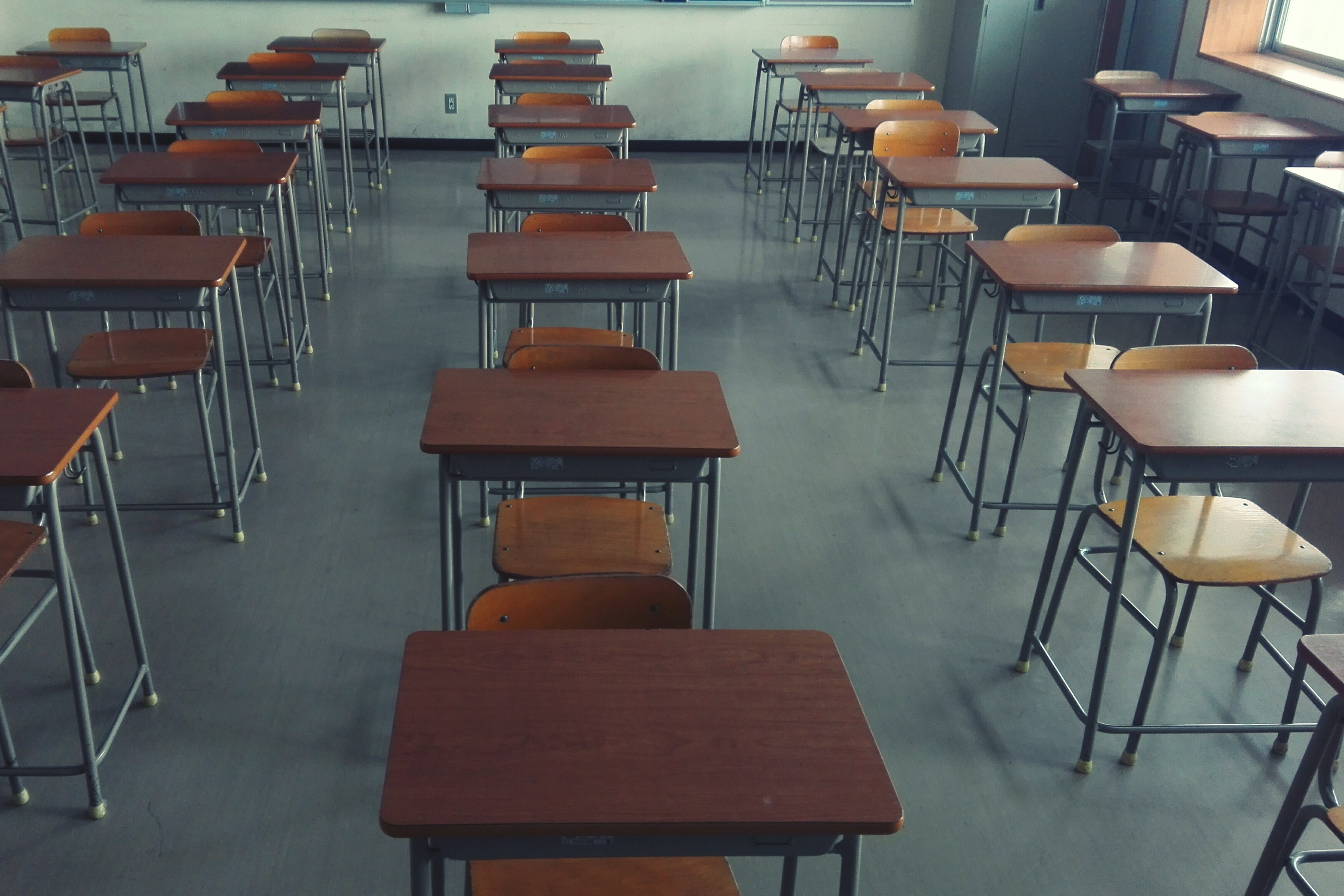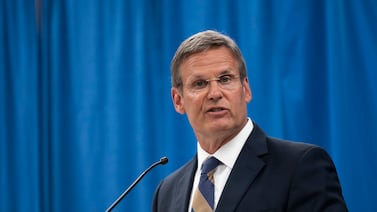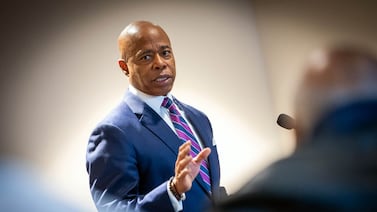With just two weeks to go before school buildings are scheduled to reopen, New York City is dispatching teams of engineers to ensure that airflow and filtration in 56,000 classrooms are up to the task of curbing the coronavirus.
Mayor Bill de Blasio announced the effort on Tuesday, as teachers and principals continue to raise the alarm about whether the air will be safe, given mounting evidence of the virus’s more potent spread indoors. Of the 10 largest school districts in the country, New York City is the only one planning to reopen classrooms — even as calls mount for a delay and the teachers union threatens to strike.
With “over 100 teams” of inspectors, made up of two to four engineers from the School Construction Authority, the city is aiming to complete walkthroughs of some 1,700 schools in just one week. School custodians and employees from the fire and building departments will also pitch in.
“All students and staff will be teaching in safe spaces with proper ventilation. That is our promise to you,” Schools Chancellor Richard Carranza said at a press conference.
The task ahead is immense. Inspection records of city school buildings show that, of roughly 1,700 schools with ventilation system reports, about 1,030 of them had some kind of documented problem with the air supply or exhaust components, according to a Chalkbeat analysis.
To help parents and educators find out whether their building had any reported issues, Chalkbeat has compiled the most recent inspection reports publicly available for each New York City school. You can search for your school’s records below to learn whether there were any deficiencies in the exhaust fans, which are supposed to pull stale air out of buildings, or with supply fans, which bring fresh air inside.
Or, submit your cell phone number below and we’ll send your school’s report to your phone.
Dates of the reports range from fall 2018 through summer 2019. Though the education department conducted another round of inspections this summer, those results have not been shared publicly.
The city has been racing to repair and upgrade ventilation systems as officials aim to reopen buildings on Sept. 10. In some cases, teachers who raised concerns about airflow had already been assured that their building was safe.
But faced with skepticism, and concerns that educators who are unqualified had been tasked with giving buildings the all-clear, the mayor announced another round of sweeps. Officials say 10,000 portable air purifiers have been purchased, and custodians will be armed with machines that read CO2 levels, which help gauge how much fresh air is circulating in an occupied room.
“This is a final push before school opens,” he said. “We’re adding extra elements here to make sure we’re going the extra mile to get everything right.”
De Blasio has also promised to post “a constant scorecard and update,” to help families and educators track the progress of repairs and upgrades at their school.
It remains to be seen whether all of those moves will be enough to convince school communities that buildings will be safe for a return to in-person instruction. Tuesday’s announcement, like many of the city’s school reopening plans, came with scant details. It’s still unclear how officials are determining if the airflow in buildings is adequate before reopening, or how much information will be disclosed about repairs that are deemed necessary, versus those that have actually been made.
‘Unacceptable’ conditions
Ventilation remains one of the biggest worries educators have about returning to school. Coronavirus transmission is believed to be higher indoors than outside, and experts are especially concerned about classrooms that can’t push stale air out and properly filter fresh air coming in. If ventilation systems are broken or defective, or if buildings have windows that can’t open, many worry that stagnant, potentially virus-laden air could put teachers and students at risk — especially since children may struggle to keep their nose and mouth covered all day and will be maskless when they eat meals in the classroom.
In open letters to the mayor and chancellor, principals across at least five different districts pointed to air quality concerns as one of the many reasons they feel the start of classes should be delayed.
One Queens high school teacher said ventilation has long been a problem at her school, which was built in 1935. Deirdre Tuite, a social studies teacher at the Academy of American Studies, said it’s particularly bad when the school turns on the heat in October.
“There have been days when I have opened my classroom door in the morning to find that with the heat on, the moisture in the room built up so much that desks had a layer of condensation on them. These conditions are unacceptable, especially now,” Tuite said.
This sweating can be an indication of a larger ventilation problem, experts say. Inspection reports for the school show there are no supply fans. In such cases, the education department says schools can rely on windows to pull in air, but Tuite said the windows at her school “are bolted shut in most rooms.”
Roughly 58% of the 980 schools with exhaust fans — which are supposed to pull air out of buildings — have at least one deficiency, Chalkbeat’s analysis found. A quarter of the roughly 260 schools with supply fans, which bring outside air in, have at least one deficiency. Nearly 90 schools have broken dampers, which are flaps in the ducts that close to prevent smoke from spreading in case of a fire.
The education department said that the Division of School Facilities this summer assessed the ventilation systems of all of its buildings, and repairs are being performed in conjunction with the School Construction Authority.
These repairs include fixing windows, remedying faulty HVAC systems, and replacing air filters in buildings with central HVAC systems with MERV 13 ones, which are recommended because they can capture particles as small as the coronavirus.
Classrooms or entire buildings that are not up to standards will not be used, city leaders have said, but they have not disclosed how many have been identified as unsuitable.
Lorraine Grillo, the head of the School Construction Authority, said Tuesday that windows have been a big focus of the city’s efforts.
“We had them reopened so that there’s airflow. The goal here is to have air flowing through these classrooms. We have some in some schools, classrooms that have no windows, so we have to make sure that the air filters are working,” she said.
Big questions remain about the winter, since heating systems often provide even less circulation than air conditioning. The city is eyeing long-term repairs, Grillo said. But de Blasio, and some experts, have said that opening up the windows while cranking up the heat might be a solution.
“The winters aren’t the winters we used to know,” de Blasio said Tuesday. “So we’re going to have a number of days throughout the year where you can have the windows open in a way that works. This is global warming in action, unfortunately.”
Are school ventilation systems up to the challenge?
Experts warn that repairs might not be enough if the systems themselves are not up to the standards needed to slow the spread of COVID-19. Schools often lack high-powered filtration systems needed to dilute virus-infected air, or to turn over the air as often as needed, according to David Krause, a toxicologist and industrial hygienist, and a member of the American Industrial Hygiene Association.
“It’s truly designed to control body odor, to be honest,” he said of school ventilation systems. “This is a highly contagious aerosol. We’re being asked to suspend disbelief and believe that buildings were designed to protect us against infections. You’re going to have to do more.”
The U.S. Centers for Disease Prevention and Control released new guidance last week that recommends changing out the air in classrooms twice an hour, and to consider the use of portable high-powered filters to help do so. The center also calls for schools to use fans to increase the effectiveness of open windows, with careful attention to the way those fans are positioned so as not to spread contamination. In rooms with poor ventilation, UV technology could help, according to the CDC.
The education department declined multiple requests to explain how it verifies whether classroom levels of airflow and filtration are safe before reopening — whether systems have been upgraded or not.
In a call with principals last week, Tom Taratko, the education department’s chief executive for space management, said it wouldn’t be practical or useful to provide air quality reports for New York City’s vast system. He said that ventilation systems were built to handle much greater numbers of students and staff than those who will be returning in the fall, when social distancing requirements will limit classrooms to about a dozen people or fewer.
Ventilation systems, “if they are working properly, they are going to supply more than enough fresh air,” Taratko said.
Without assurances about air quality, educators and families feel like they have little to go on.
Need for transparency
Already, there is a lack of trust: Some educators had for years been complaining about ventilation problems, which in some cases have resulted in moldy classrooms. Many more lost faith in the education department over the way officials handled COVID-related cases in March, when teachers were called into buildings for training after they were closed and principals were muzzled from disclosing cases. That is layered on top of criticisms of the city’s handling of other building maintenance crises, including testing and remediation for lead in paint and in the water at schools.
Many who work inside schools also find it hard to believe that promised ventilation fixes will happen because of the city’s grim financial situation, which resulted in $700 million in cuts to the education department’s budget this year. The United Federation of Teachers has set up its own team to ensure the city is following through on a litany of safety measures, including checking whether exhaust fans are working.
Shawn Hindes, a teacher at M.S. 324 in Upper Manhattan, remains concerned about the safety of the air in his 1990s-era building. It has been hard for him, as his school’s representative to the teachers union, to instill confidence in his colleagues working in a building whose heating, ventilation, and air conditioning system hasn’t worked properly for years. A 2019 building inspection report revealed a litany of problems.
An official from the Division of School Facilities recently visited the school, claiming it was safe, recounted Hindes, who wanted to show his colleagues proof of that assertion. But the inspector gave him no such thing.
“I was told the building was properly ventilated,” Hindes said. “When I asked for a specific report, I was told no report was taken.”
With concerns over ventilation, some educators and health officials, including the nation’s top infectious disease expert, are pushing for outdoor learning.
“Get as much outdoors as you can. If you look at the superspreader events that have occurred, they’re almost always inside,” recently said Dr. Anthony Fauci, who heads the National Institute of Allergy and Infectious Diseases and is a member of the White House Coronavirus Task Force.
Schools were given the green light this week to set up outdoor classrooms, but the move was blasted as too little, too late by the Council for School Supervisors and Administrators, the union representing principals. The city hasn’t dedicated any money to helping schools erect tents, and Chancellor Carranza suggested that well-off PTAs could help out schools with smaller bank accounts.
Bruce Bomier, a public health professional and board chair of the nonprofit Environmental Resource Council, which has been advising U.S. schools for nearly 50 years on environmental issues, said schools should focus on ensuring proper air dilution on a classroom-by-classroom basis.
Still, assuring school communities that things are safe can be an uphill battle.
“The only answer to this is complete transparency,” Bomier said.
Reema Amin contributed to this report.








